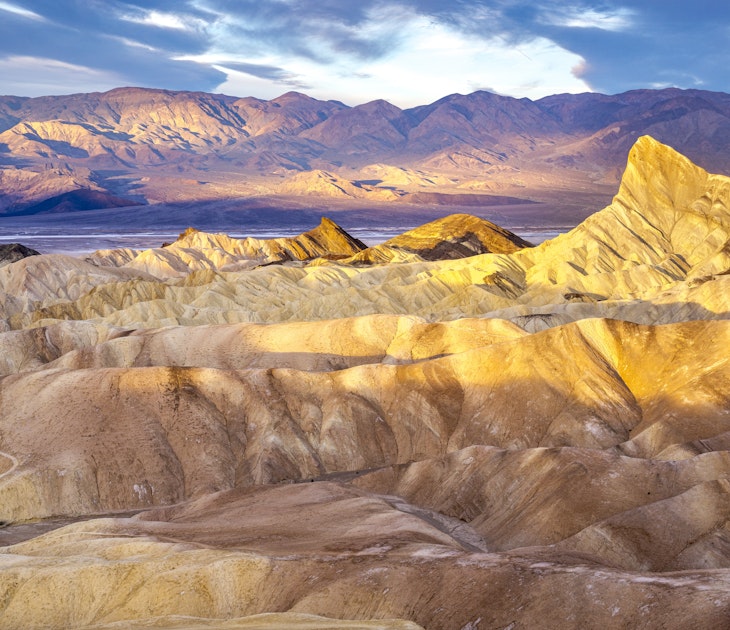
How to travel to California during wildfire season
Nov 8, 2019 • 5 min read

Concerned about traveling to California during wildfire season? With a few precautions, you can still have a great trip © Ifran Khan / Getty Images
It’s been plastered across the headlines for over a month – recent wildfires are ravaging many areas of California. Homes are being destroyed, and millions of people have been affected by power outages. It’s a seasonal occurrence brought on by the warm, fast moving Santa Ana winds, stressing out locals from September through November each year. Understandably, this has led many travelers to wonder if it’s still a good idea to head to the Golden State at all and, if so, how should they alter their autumn plans to stay safe?

Check Before You Go
Let’s start with the good news. In the digital age, there are a number of free tools people can use to double-check fire containment and air quality before ever boarding the plane. The World Air Quality Index offers a visual map highlighting which cities are most affected by pollutants, allowing visitors to zoom in to read current risk levels. An AQI of 100 or less is considered normal.
Another great resource is the LA Times’ interactive wildfire map. It provides a bird’s eye view of the state, with details about fire perimeters, hot spots, containment percentage, and air pollution in the surrounding areas.
In addition Washington, Oregon and California recently launched WestCoastTravelFacts.org, a one stop shop for everything you might want to know about safely traveling to these three states, particularly during fire season. It has real-time air-quality readings, live-cam feeds, and an array of itineraries covering the three states in addition to emergency contacts and up-to-the-minute local news.
Further reading: Planning a trip the West Coast? This new website will help keep you safe
What to Pack
Unfortunately, a scarf wrapped around your face won’t do much except create a colorful, bohemian fashion statement. Cheap, surgical masks aren’t much better. For true protection from wildfire smoke, travelers to California will want to purchase an N95 mask designed to filter out very small particles, especially if they have heart or lung disease or are asthmatic.

Hotel Cancellation Policies
Sifting through a hotel or Airbnb’s wildfire cancelation policy can feel like wandering through a swamp of legalese, especially since it varies tremendously from place to place. For example, all hotels in Healdsburg, California offered refunds to travelers when the city was evacuated, but the rules for canceling simply due to smoke were much, ahem, hazier. Some offered the chance to rebook for free in 6 months, while others handled cancellations on a case-by-case basis if visitors had health concerns. The Travelodge mentioned a 72-hour cancelation policy year-round if visitors booked directly through their site instead of a third-party.
On Airbnb, cancelation policies all depend on the host you booked with, ranging from “flexible” to “super strict.” Historically, hosts have not made exceptions due to wildfire smoke, unless the town itself has been evacuated. The safest bet is to book a space with the most flexible rules and then check the weather before your departure.
Trip Insurance
Most travel insurance companies do provide disaster relief, which should include wildfires. These policies are designed to refund costs incurred for three main things: if the hotel is uninhabitable, if your destination gets evacuated, or if your own home is damaged while traveling. Some insurance may also cover trip interruption (when 50 percent or more of a trip is missed due to natural disaster or mandatory evacuation).
Another option for peace of mind is making flight and hotel bookings via a travel-oriented credit card like Chase Sapphire Reserve, which offers built-in travel protection for severe weather, uninhabitable lodging, and trip delays.
Further reading: California's top experiences

Things to do During Fire Season
Though it may feel like the fires are attacking every major city in California, due to the constant news coverage, the truth is that wildfires are usually quite localized, and daily life is proceeding normally. This means that even if a portion of a city or area you plan to visit is affected, there will be perfectly safe places to visit only a short drive away.
In Los Angeles, tourists looking to avoid fires in Malibu or the San Fernando Valley have a multitude of activities to choose from on the eastern side of the city. The Broad, the California Science Center, and the Los Angeles County Museum of Art (LACMA) are far away from the typical burn zones and offer a welcome, air-conditioned respite from the smoke-filled air.
Looking to enjoy some time outdoors? The San Gabriel Mountains provide a massive alpine playground full of towering pine trees and hills thick with chaparral, just one hour outside Los Angeles. When the recent Getty Fire was raging on the west side, the Air Quality Index high in the San Gabriels remained good.
San Francisco museums have stepped it up a notch for those looking to breathe easier. The San Francisco Museum of Modern Art (SFMOMA), Asian Art Museum, and the Bay Area Discovery Museum are offering free admission in early November to anyone looking for a smoke-free sanctuary.
California also boasts two world-class aquariums that are a fantastic option on days with poor air quality. The Aquarium of the Pacific in Long Beach is a must-see for families visiting Southern California, while the Monterey Bay Aquarium to the north offers a rare look at the kelp forests and marine life of the Pacific Coast.
The bottom line: If you check the air quality and fire maps in the week leading up to your trip, you’ll have a pretty great idea of conditions when you arrive in California. And, even if the winds suddenly shift, there are still dozens of wonderful and unique indoor activities to explore.
Explore related stories









